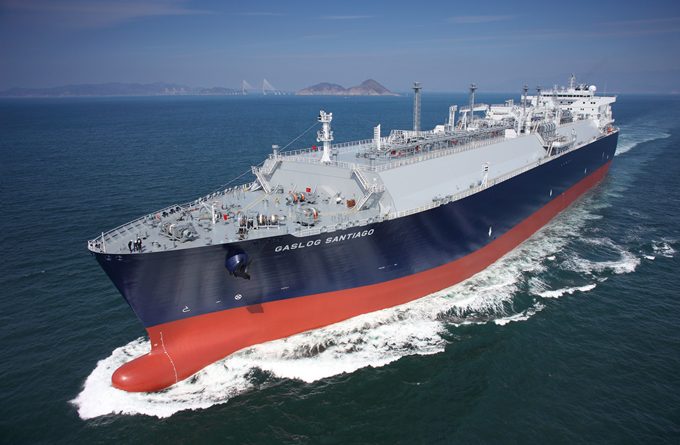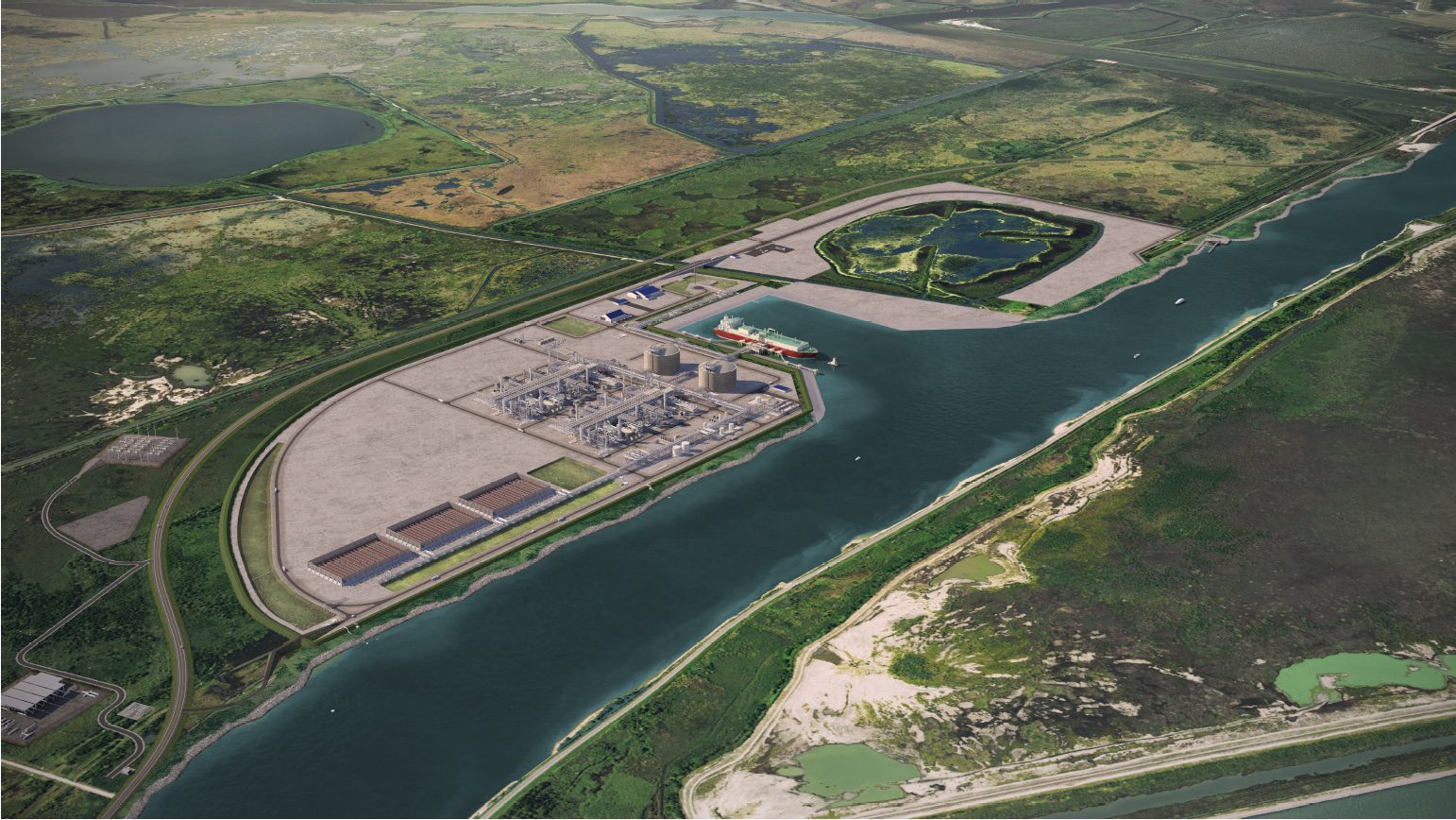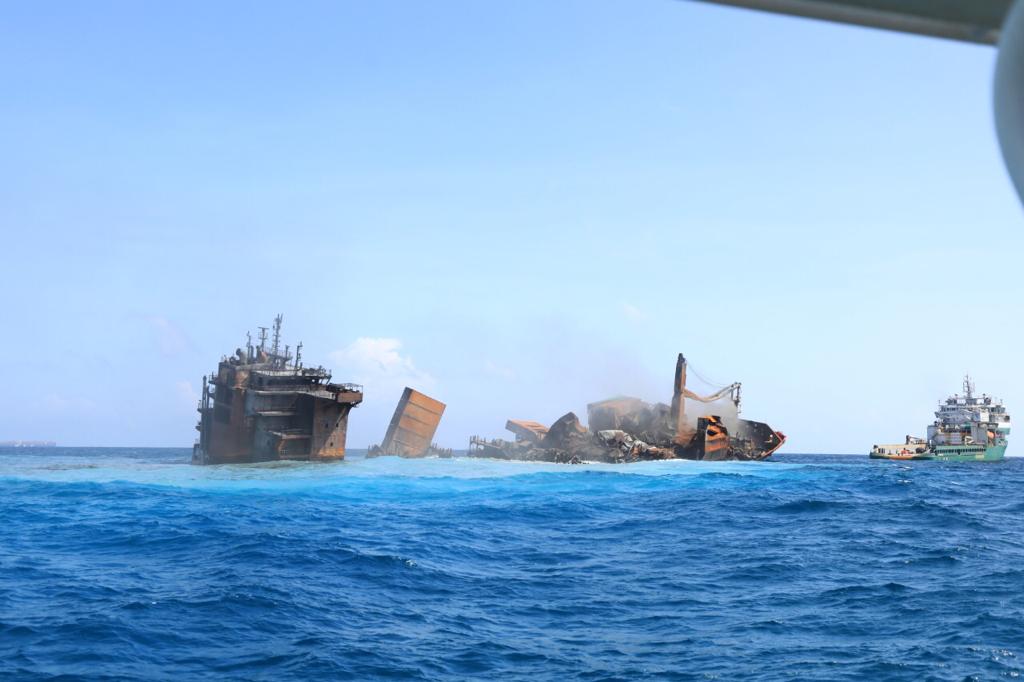File photo of an SHI-built LNG carrier. Photo credit: Samsung Heavy Industries
 By Oleg Vukmanovic and Henning Gloystein
By Oleg Vukmanovic and Henning Gloystein
MILAN/SINGAPORE, Dec 10 (Reuters) – China’s state-controlled energy giant Sinopec wants to sell some long-term liquefied natural gas (LNG) import deals as a slowing economy makes them unprofitable, sources say, signalling the end of a five-year boom fuelled by rising Chinese demand.
Asia’s thirst for energy has helped drive a “dash for gas” in producer countries from Australia to Canada, with LNG emerging as the fastest growing fuel source since the beginning of the century on the back of soaring Chinese imports.
But just as long-planned projects start to come on stream China’s economy is stuttering, which is likely to crimp demand and pull down domestic gas prices to levels that make imports unprofitable.
“We talk about China choking on LNG. There’s just too much coming onto the market,” said Gavin Thompson, Head of Asia Gas Research at Wood Mackenzie.
Analysts say falling crude prices, which have dropped around 40 percent since June, are another factor weighing on Chinese gas prices.
“Based on the recent fall in oil prices… there is an increased risk that there could be a near-term cut in natural gas price (in China) for the first time,” Bernstein Research said on Tuesday, adding that at lower levels “LNG and pipeline imports make little sense for producers”.
And even if retail prices do not fall, imports may not be needed as the high gas price at home caps demand.
“Slower economic growth and higher domestic prices … are tempering demand,” said Michal Meidan, director of consultancy China Matters.
In response, China is trying to find buyers for contracted LNG on the international market, which is already oversupplied due to slowing demand and rising output that have seen Asian LNG prices halve this year, with analysts expecting another 30 percent fall by 2015.
“There is at least one SPA (Sales and Purchase Agreement) being negotiated with a Chinese buyer that has a lot of destination flexibility, including to terminals outside of China,” said one source involved in LNG shipments from Australia to China.
UNPRECEDENTED EXPANSION
Sinopec is planning to offload LNG from new export plants in Australia and potentially Papua New Guinea to BP, advisory and trading sources with knowledge of the matter said, amid growing unease over the scale of an unprecedented expansion that has seen the construction of 11 LNG import terminals since 2006 and includes plans for 25 more projects.
BP and Sinopec declined to comment, but the sources said that, beyond selling excess cargoes into the spot market, other options being discussed included selling parts of its long-term agreements to another company.
Three industry sources said Sinopec was in early talks to sell off chunks of the 20-year, 4.3 million tonne per annum (mtpa) supply it bought from Origin Energy’s Australia Pacific LNG plant due to start in 2015.
Sinopec invested in the Australia Pacific LNG in 2011 and 2012, when Asian spot LNG prices averaged $14.8 per mmBtu, compared with less than $10 per mmBtu now.
It may also sell excess volumes coming from its 2 mtpa stake in Exxon Mobil’s Papua New Guinea LNG, in which it invested in 2009, when LNG prices were low but China’s LNG demand was expected to grow for decades to come.
FIRE SALE
Tumbling energy prices may make reselling LNG difficult as consumers across Asia also scramble to offload excess volumes, contributing to an emerging glut.
Sinopec is exploring options to sell BP up to 1 mtpa over 2016 and 2017 from its Australian project, which could be extended to run until 2020, the sources said.
While oil traders, including in China, often take advantage of low prices to build up long-term reserves in preparation for supply disruptions or higher prices in the future, stocking LNG is more costly as the gas has to remain liquefied in super-cooled facilities or pumped into pressurized gas storage tanks after being regasified.
The sell-offs could also end a race by Chinese energy firms to enter the LNG market.
Sinopec, CNOOC, CNPC and PetroChina all made big LNG investments in the past years, racing to outdo competitors from Japan and South Korea, which remain the world’s biggest LNG importers.
“The build-out was driven by competition between the companies for market share,” Meidan said.
LNG importers also face stiff competition from other fuels such as pipelined gas, hydroelectric and coal-fired power generation, as well as domestic shale gas production.
“Coal and hydro are hard to beat over price,” one LNG trader said. “Russian and central gas Asian pipelines will come in, and one day Chinese shale will add to our long list of competitors.”
(Additional reporting by Chen Aizhu in BEIJING, Sarah MacFarlane in LONDON and Jacob Gronholt-Pedersen and Keith Wallis in SINGAPORE; Editing by and Alex Richardson)
(c) 2014 Thomson Reuters, All Rights Reserved

 Join The Club
Join The Club











